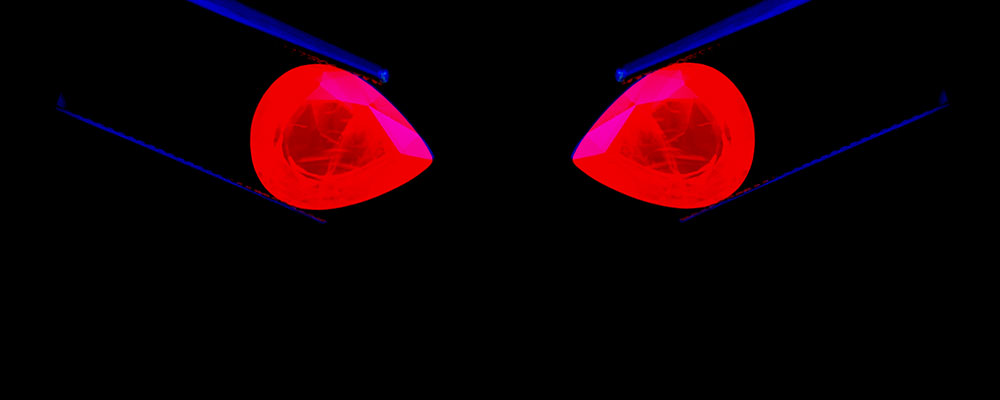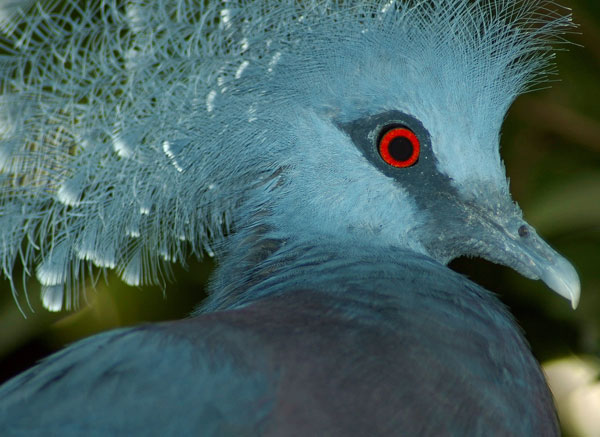A loving look at ruby – the gem of passion – from the standpoint of the connoisseur.
Come here little girl. Get into the car
It's a brand new Cadillac. Bright red. Come here little girl…
Laurie Anderson, Bright Red
Ruby Connoisseurship • Seeing Red
Blue, green and red – sapphire, emerald and ruby – the holy trinity of colored-stones. There is something primal about our attraction to these gems. Each relates to a familiar part of life. Blue is ocean/sky. Green – verdant soothing. And red? Red is fire, blood and passion – the very life-giver itself. Women do not paint their lips green, nor do men send blue valentines. For thoughts of love and passion, only one color will do. And no more passionate gem exists than the ruby.
Building the perfect beast
Let us take a look at the beast known as ruby. Ruby is among the rarest of all the major precious stones, with only a handful of sources producing facet qualities in quantity. We must first realize that the perfect ruby does not exist. Get it out of your head. There are no tens. So rare is this lass that even an eight is worthy of down-on-your-knees idol worship.
This is because fine ruby requires chromium and, as with emerald and alexandrite, the processes that place chromium into corundum are just as stressful as love itself. Thus there are plenty of corundums with chromium, but only a rare few that grow slowly enough to achieve perfection.
The best rubies have high color saturation. This results from a mixture of the slightly bluish red body color and the purer red fluorescent emission.
Let it glow
Ruby’s red glow is like the snowflake and the rainbow. In one of those glorious accidents of nature, ruby is blessed with both a red body color and a tendency to take bits of visible blue and green light and blast them back with a laser-like red emission. Indeed, the first lasers made use of this very property (synthetic ruby is still a common laser material).
This red glow is key, for it tends to cover up the dark areas of the stone caused by extinction from cutting. Thai/Cambodian rubies might possess a purer red (less purple) body color, but they lack the strong fluorescence. These Fe-rich rubies display good color where light is properly reflected off pavilion facets (internal brilliance). However, where facets are cut too steep, light exits through the side instead of returning to the eye, creating darker areas (extinction).
All stones possess extinction to a certain degree, but in fine rubies, the strong crimson fluorescence helps mask it. The best Burmese stones actually glow red, as though Mother Nature brushed a broad swath of fluorescent red lipstick across the face of the stone. This is the carbuncle of the ancients, a term derived from the glowing embers of a fire. Indeed, the King of Ceylon was said to possess a ruby that shone so brightly that when he brought it out at night, it would light up the entire palace.
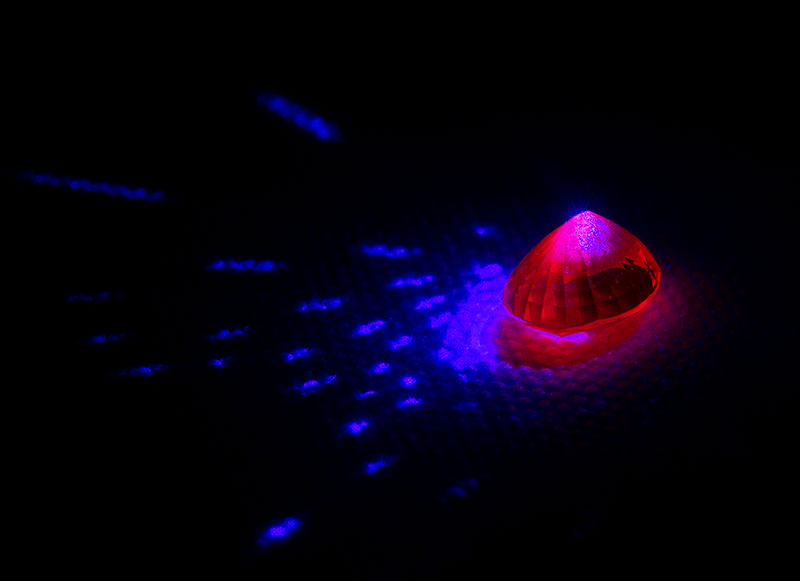 Let it glow
Let it glow
Ruby (and red spinel) is unusual in that it can take blue light and re-emit it as red fluorescence. This separates ruby (and spinel) from other red stones, such as garnet.
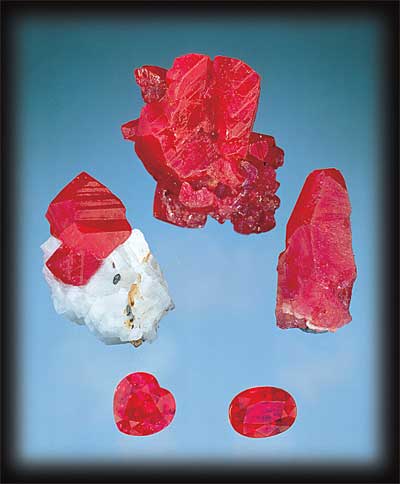 Rough and cut rubies from Burma, Vietnam and Afghanistan. Photo: Harold & Erica Van Pelt; Gems: Pala International
Rough and cut rubies from Burma, Vietnam and Afghanistan. Photo: Harold & Erica Van Pelt; Gems: Pala International
Gossamer
What gods are these? Not only did they bless the ruby with an inborn glow to match its scarlet skin, but such was their benevolence that they also gave us silk – oriented needles of rutile – gossamer threads that banish the darkness besmirching the rest of the mortal gem world.
Such tiny exsolved inclusions scatter light onto facets that would otherwise be extinct (dark). This gives softness, as well as spreading it across a greater part of the gem’s face. Thai/Cambodian rubies contain no rutile silk, and thus possess more extinction.
In actuality, rubies from most sources possess a strong red fluorescence and silk similar to those from Burma, with the Thai/Cambodian rubies being the exception. However, those from Sri Lanka are often lighter in color, while, with other sources, such as Kenya, Pakistan and Afghanistan, material clean enough for faceting is rare. Thus the combination of fine color (body color plus fluorescence) and facetable material (i.e., internally clean) has put the Burmese ruby squarely atop the crimson crest.
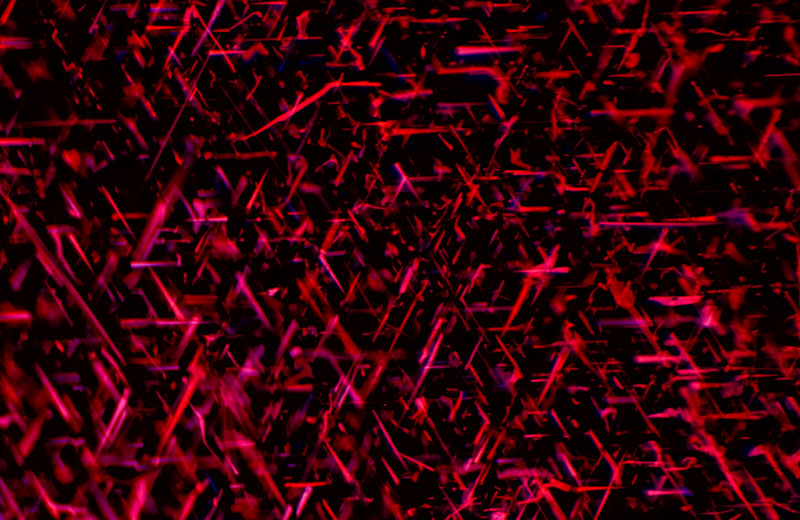 Gossamer
Gossamer
Rutile silk in ruby. When present in small amounts, these tiny inclusions can have a beneficial effect on the appearance of ruby.
Seeing red
What do I look for in ruby? Bright is first and foremost. Can’t stand the dull or dark stuff. Not for me the burgundy reds typical of the Thai/Cambodian border. When I fill my tank, I want gasoline that burns.
Color
With ruby, the intensity of the red color is the primary factor in determining value. The ideal stone displays an intense, rich crimson without being too light or too dark. Stones which are too dark and garnety in appearance, or too light in color, are less highly valued. The finest rubies display a color similar to that of a red traffic light.
There is a tendency for the market to favor stones of the intense red-red color. Certainly the highest prices are paid for these. But do not overlook the slightly less intense shades. Such gems have a brightness missing in their more saturate brethren and often look better in the low lighting that one typically wears fine jewelry. Like beautiful women, rubies come in many shades, the preference for which is a matter of personal taste.
Clarity
Clarity is ruby’s Achilles heel. Red corundum is common. Ruby is incredibly scarce. The key difference is clarity.
In terms of clarity, ruby tends to be far more heavily included than sapphire. While the general rule is to look for stones that are eye-clean, i.e., with no inclusions visible to the unaided eye, extremely fine silk distributed lightly throughout the stone can actually enhance the beauty of some rubies.
For star rubies, a certain amount of silk is necessary to create the star effect, but too much desaturates the color, making it appear grayish. This is undesirable.
Cut
In the market, rubies (and sapphires) are found in a variety of shapes and cutting styles. There is a definite hierarchy. Faceted stones are more valuable than cabochons and cabs are more valuable than beads. Carvings are the least valuable. The reason has to do with clarity. The cleanest rough will be faceted, that not clean enough to facet gets cabbed, that not clean enough to cab gets made into beads and carvings.
With faceted rubies, ovals and cushions are most common, but rounds are also seen, as are other shapes, such as the heart or emerald cut. Slight premiums are paid for round stones, while slight discounts apply for pears and marquises. This is because the shape of the rough typically determines what shape will produce the biggest piece.
Stones that are overly deep or shallow should generally be avoided, as they will lack in brilliance. However one must be more generous in judging a gem as the quality of the material goes up.
Cabochon-cut rubies are common, but fine cabs are rare, indeed. This cut is used for star stones, or those not clean enough to facet. The best cabochons are reasonably transparent, with nice smooth domes and good symmetry. Avoid stones with too much excess weight below the girdle, unless they are priced accordingly.
Prices
With the exception of imperial jadeite and certain rare colors of diamond, ruby is the world's most expensive gem. But like all gem materials, low-quality (i.e., non-gem quality) pieces may be available for a few dollars per carat. Such stones are generally not clean enough to facet. Auction records are as follows:
- Cut ruby, per carat: 6.04 ct; Burma; faceted, oval cut, mounted in an Etcetera ring. It sold at Christie's Hong Kong (Lot 3801) on 29 May., 2012 for $3,347,042 ($554,146/ct).
- Cut ruby, total stone price: Hope Ruby; 32.08 ct; Burma; cushion-shaped ruby ring of 32.08 cts, by Chaumet; sold at Christie's Geneva (Lot 66), 15 February, 2012 for $6,742,440 ($210,000/ct).
- Star ruby, per carat and total stone price: 19.53 ct; Burma; oval star ruby, mounted in an Etcetera ring; sold at Christie's Hong Kong (Lot 1791), 27 Nov., 2012 for $1,247,412 ($63,871/ct).
For an up-to-date listing of ruby, sapphire and spinel auction records, see this page at Lotus Gemology.
Stone sizes
Large rubies of quality are far more rare than large sapphires of equal quality. Indeed, any untreated ruby of quality above two carats is a rare stone; untreated rubies of fine quality above five carats are world-class pieces.
Quality ranking of rubies by country
An approximate ranking of important ruby origins is given below. This applies only for the finest untreated qualities from each source and is but a general approximation. In other words, a top-quality Thai/Cambodian ruby can be worth far more than a poor Mogok stone.
- Myanmar (Mogok, Mong Hsu & Nanyazeik) and Vietnam (Luc Yen & Quy Chau)
- Mozambique (Montepuez) & Tanzania (Winza)
- Madagascar (Didy & Vatomandry)
- Thailand/Cambodia
- Everything else (Afghanistan, Tajikistan, Kenya, Sri Lanka, etc.)
Again, I would like to emphasize this in the strongest possible terms: origin is important only when the quality of the gem in question rises above the mainstream. Origin does not determine value in and of itself.
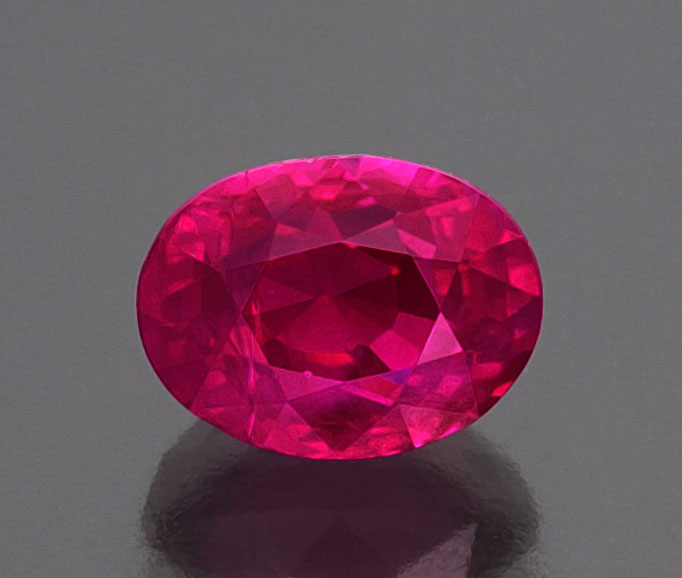 This Mogok ruby epitomizes the quality that has made the Burmese locality second-to-none in the world of rubies. 4.02 ct; unheated; Veerasak Gems. Photo: Wimon Manorotkul
This Mogok ruby epitomizes the quality that has made the Burmese locality second-to-none in the world of rubies. 4.02 ct; unheated; Veerasak Gems. Photo: Wimon Manorotkul
Mogok
When we talk ruby, the conversation begins with Burma. In the days of yore, matters were simple. Burma meant Mogok. This storied deposit was known for over 1000 years as the home of the finest ruby on the planet.
While Mogok is the traditional source of the world’s finest rubies, good stones are rare even from this fabled area. Pigeon’s blood was the term used to describe the finest Mogok stones, but has little meaning today, as so few people have seen this bird’s blood.
Mogok-type rubies possess not just red body color, but, by a freak of nature, red fluorescence, too. In addition, the best stones contain tiny amounts of light-scattering rutile silk. It is this combination of features that gives these rubies their incomparable crimson glow. In Mogok rubies, the color often occurs in rich patches and swirls, and color zoning can occasionally be a problem. The shape of Mogok ruby rough generally yields well-proportioned stones.
In addition to faceted stones, the Mogok Stone Tract also produces the world’s finest star rubies.
Möng Hsu
When the Mong Hsu deposit came on stream in 1992–1993, it took the world by storm. Suddenly, we were awash in a sea of reds the likes of which had never been seen before. And a fine stone it was, too; this was not the garnet-like hue of Thailand, but a rich, fluorescent red.
During the period from about 1994 to 2003, Mong Hsu produced close to 90% of the fine cab and facet-grade ruby in the world. However at the current time (2013), production has dropped significantly. Even in the heyday, most cut stones were less than two carats.
Mong Hsu material can be extremely fine, but virtually all is heat treated, and most is also flux-healed. That said, the finest rubies this author has ever laid eyes on have been unheated stones from Mong Hsu. Such stones are exceedingly rare, but when found, have the high priests of red bowing and curtsying for the opportunity to kiss the hand of this regal dame.
Nanyazeik (Nayazeik)
Since approximately 1998, rubies (including stars) began to trickle out of Nanyazeik (a.k.a. Namya) in Myanmar’s Kachin State. Namya rubies often feature a slightly purplish red color. Only time will tell whether this has the makings of an important source. Other than ruby, Nanyazeik has produced some superb red spinels, equal to anything from Mogok.
Vietnam
Beginning in the late 1980s, fine ruby began pouring out of two different deposits in Vietnam, Luc Yen (north of Hanoi) and Quy Chau (south of Hanoi). Although Vietnam’s ruby originates from two different mining areas, both sources display similar characteristics.
There’s nothing like time to put things in perspective. In the late 1980s, Vietnamese ruby literally exploded on the world gem market. The best Vietnamese ruby approaches fine Mogok, but since the early 1990s most have tended towards pink. Today, little facet-quality is produced, and even the cabochon material rarely competes with that available from other sources. Some pinkish star material is also produced. But the mines continue to produce and top Vietnam reds can stand with anything ever unearthed in Burma.
Madagascar
When I first studied gemology in 1979, my teacher mentioned an isle off the coast of Africa known as the “Beryl Island.” He was speaking of Madagascar. Today Madagascar is one of the richest gem producers on the planet.
Prior to the year 2000, Madagascar produced mainly fine blue and pink sapphires. But now two important ruby deposits have been discovered. The first is about 10–30 km inland from the coastal town of Vatomandry, while the second is at Didy. Vatomandry produces stones that are light and bright, reminiscent of Burma, while the Didy stone has a color that is almost a spinel red, with little or no trace of brown. Rutile silk seen in some pieces suggests that star stones may be forthcoming. Much of the material from both deposits is heat-treated.
It is still too early to properly rank Madagascar in the ruby world, but the stones I have seen so far suggest there is great promise.
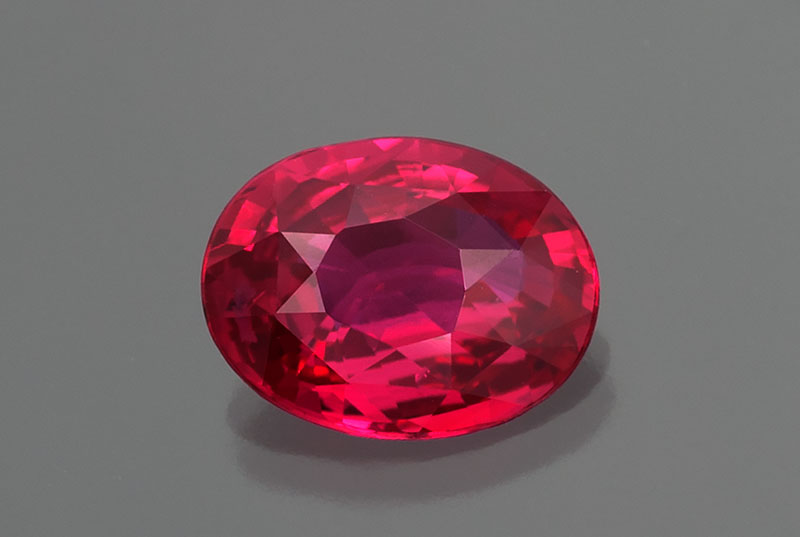 A fine example of a ruby from Didy, Madagascar. 5.04 ct; unheated; Crown Color. Photo: Wimon Manorotkul
A fine example of a ruby from Didy, Madagascar. 5.04 ct; unheated; Crown Color. Photo: Wimon Manorotkul
Vietnam
Beginning in the late 1980s, fine ruby began pouring out of two different deposits in Vietnam, Luc Yen (north of Hanoi) and Quy Chau (south of Hanoi). Although Vietnam’s ruby originates from two different mining areas, both sources display similar characteristics.
There’s nothing like time to put things in perspective. In the late 1980s, Vietnamese ruby literally exploded on the world gem market. The best Vietnamese ruby approaches fine Mogok, but since the early 1990s most have tended towards pink. Today, little facet-quality is produced, and even the cabochon material rarely competes with that available from other sources. Some pinkish star material is also produced.
Kenya & Tanzania
Stones from these sources are magnificent when clean, but facet-grade material is rare. Like Burma, much of this material is strongly fluorescent. Star stones are not produced from these deposits.
In 2007 a major find of ruby was made at Winza in Tanzania. Some of these stones are quite fine.
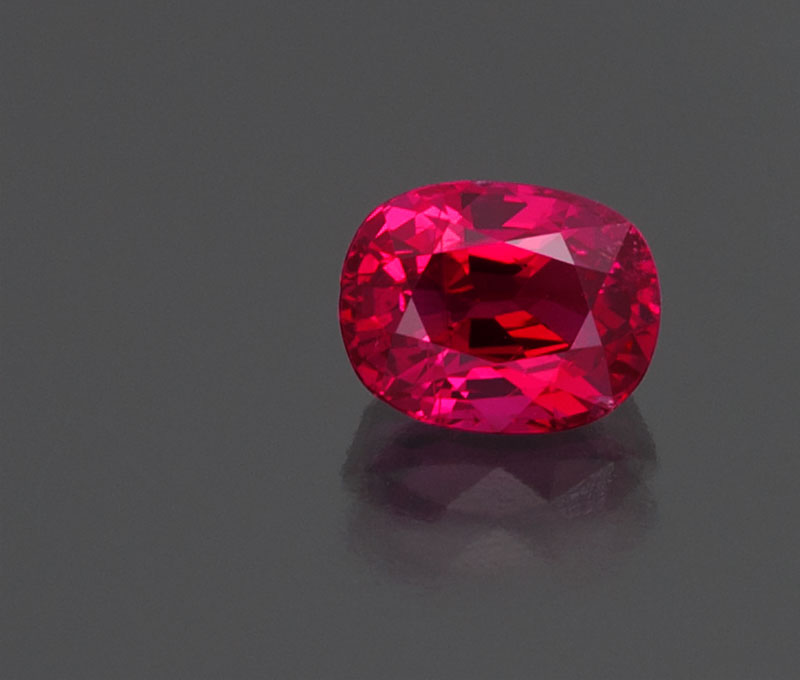 Winza rubies took the world by storm when they were discovered in late 2007. Then, almost as quickly as they appeared, they were gone. It is a lucky collector who has one in their possession. The above is a fine example. 2.04 ct; unheated; KV Gems. Photo: Wimon Manorotkul
Winza rubies took the world by storm when they were discovered in late 2007. Then, almost as quickly as they appeared, they were gone. It is a lucky collector who has one in their possession. The above is a fine example. 2.04 ct; unheated; KV Gems. Photo: Wimon Manorotkul
Mozambique
Just a year after the discovery of ruby at Winza, the red stone was found at three separate sources in Mozambique. To date the deposit near Montepuez has produced a large number of fine stones, including some faceted giants of more than ten carats. At the time of writing (2014), this source is the world’s biggest supplier of fine ruby.
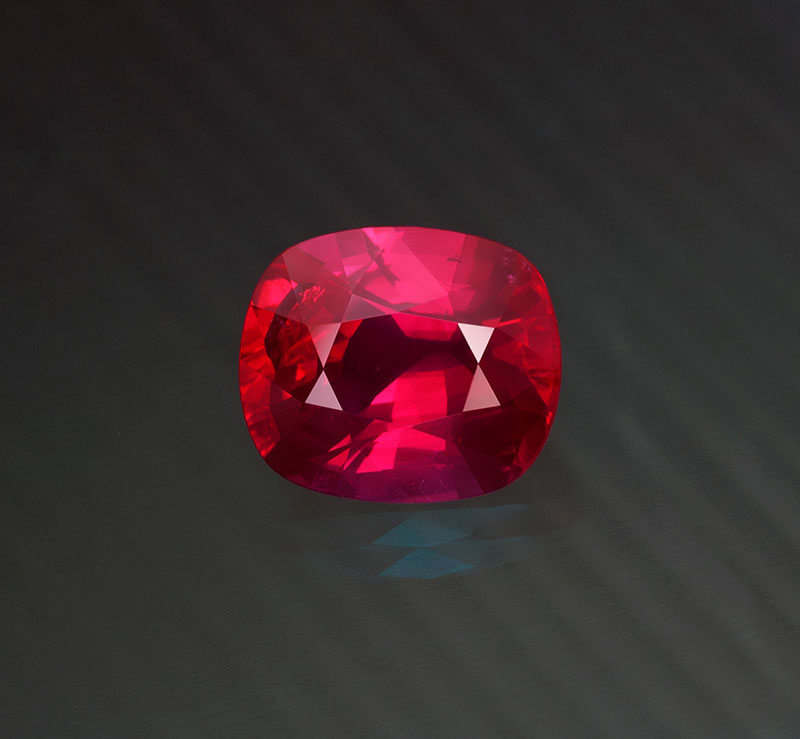 Since their discovery in 2009, the Montepuez ruby mines in Mozambique have produced the lion's share of the world's fine ruby. 15.07 ct; unheated; Crown Color. Photo: Wimon Manorotkul
Since their discovery in 2009, the Montepuez ruby mines in Mozambique have produced the lion's share of the world's fine ruby. 15.07 ct; unheated; Crown Color. Photo: Wimon Manorotkul
Sri Lanka (Ceylon)
Rarely fine rubies have been found in Sri Lanka, but most tend towards purple or pink. As with Sri Lanka sapphires, color accumulates in large stones and so they can be quite magnificent in sizes of five carats or more. Due to the bipyramidal shape of the rough, many stones are cut with overly deep pavilions. Sri Lankan ruby is strongly fluorescent and stars are common.
Afghanistan
Jegdalek has produced rubies that rank with fine Mogok stones, but facetable material is in short supply. Similar to Vietnamese and Winza rubies, many Jegdalek rubies contain small areas of blue color. They are also strongly fluorescent. If the deposit ever produces clean material, watch out. No star stones here.
Tajikistan
In 2006, the world started to see rubies from eastern Tajikistan, near the Chinese border. These stones are sourced from marble and the color can be superb, but stones clean enough to facet are rare.
Thailand/Cambodia
This ruby’s main attribute is its high clarity, but the flat crystal shapes generally yield shallow stones. Due to the high iron content, which quenches fluorescence, most stones tend to have a garnet-red color. An additional problem is the total lack of light-scattering silk inclusions (star stones are not found). Although heat treatment does make improvements, it is not enough. In Thai/Cambodian rubies, only those facets where light is totally internally reflected will be a rich red; the others appear blackish, as with red garnets. Thai stones are actually less purple than most Burmese rubies. However, Burma-type rubies appear red all over the stone. Not only is a rich red seen in the areas where total internal reflection occurs, but due to the red fluorescence and light-scattering silk, other facets are also red.
With the decline in Burma production during the 1962–1990 period, the market became conditioned to Thai/Cambodian rubies, with some people actually tending to prefer them (in the land of the blind, the one-eyed man is king).
One occasionally hears statements about how Cambodian stones are superior to those from across the border in Thailand. This is untrue. The deposits are essentially one, directly straddling the border. Today, the mines on both sides of the border are exhausted.
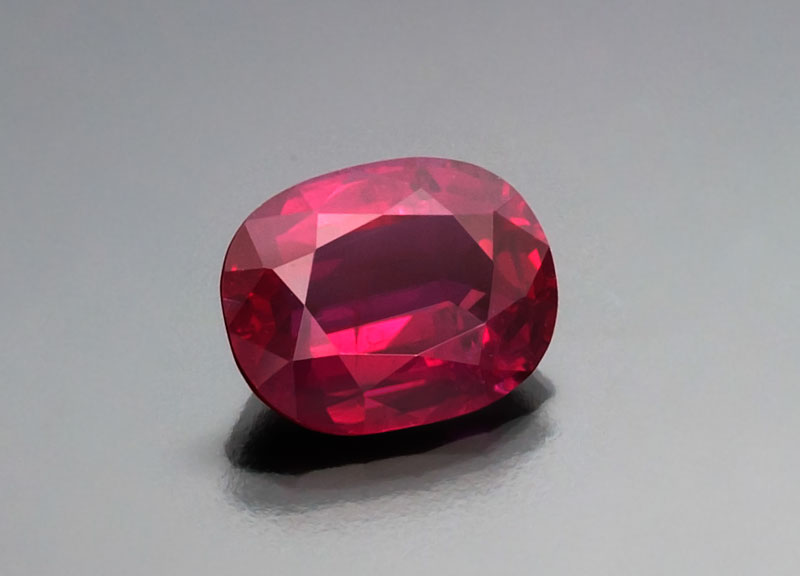 A superb example of ruby from the Thai/Cambodian border mines. These mines, which are now exhausted, supplied the majority of the world market from the 1960's up until 2000. 7.45 ct; heated; Sant Enterprises; Photo: Wimon Manorotkul
A superb example of ruby from the Thai/Cambodian border mines. These mines, which are now exhausted, supplied the majority of the world market from the 1960's up until 2000. 7.45 ct; heated; Sant Enterprises; Photo: Wimon Manorotkul
|
Pigeon's Blood Asking to see the pigeon’s blood is like asking to see the face of God. Burmese Trader While the Burmese term for ruby is padamya (‘plenty of mercury’), with other terms derived from the word for pomegranate seeds, traditionally, the Burmese have referred to the finest hue of ruby as “pigeon’s blood” (ko-twe). This term may be of Chinese (Anonymous, 1943) or Arab origin. Witness the following from al-Akfani, who described thus the top variety of ruby: Rummani has the colour of the fresh seed of pomegranate or of a drop of blood (drawn from an artery) on a highly polished silver plate. – al-Akfani, ca. 1348 ad (from Sarma, 1984) Halford-Watkins (2012) described it as a rich crimson without trace of blue overtones. Others have defined this still further as the color of the first two drops of blood from the nose of a freshly slain Burmese pigeon, an idea that is believed to originate from the practice of wringing the necks of fowl, causing a few drops of blood to exit the nostrils (Samuels, 2003). Some have compared pigeon’s blood to the center of a live pigeon’s eye (Brown & Day, 1955). Burmese gemologist Han Htun noted: A very wise old miner once told me that when you look a white pigeon in the eye you will see a distinct red color. This is “pigeon’s blood,” not the color of the blood of the animal. I never looked a white pigeon in the eye, but I saw a gray one and the color was the same. The red color has a purplish-blue tint. That is a pigeon’s blood ruby. “Rabbit’s blood” is the color of an albino rabbit’s eye. It has an orange tint. People often say that the pigeon’s blood ruby is the best; actually the ones with an orange tint (rabbit’s blood) are better, in my opinion. This account does beg the question of why the ancients would name something after an animal’s blood when they were referring to the eye, but that’s another matter entirely.
Color preferences do change with time. The preferred color today is not necessarily that of a hundred, or even fifty, years ago. In the author’s experience, the color most coveted today is that akin to a red traffic signal or stoplight. It is a glowing red color, due to the strong red fluorescence of Burmese rubies, and is unequaled in the world of gemstones. Thai rubies may possess a purer red body color, but the lack of red fluorescence leaves them dull by comparison. It must be stressed that the true pigeon’s-blood red is extremely rare – more a color of the mind than the material world. One Burmese trader expressed it best when he said “…asking to see the pigeon’s blood is like asking to see the face of God” (Nordland, 1982). The second-best color in Burma is termed “rabbit’s blood,” or yeong-twe. It is a slightly darker, more bluish red. Third best is a deep hot pink termed bho-kyaik. This was the favorite color of the famous Mogok gem dealer, A.C.D. Pain. U Thu Daw, longtime Mogok dealer and a contemporary of Pain’s, stated that bho-kyaik is not so much a color term, as an overall quality description. To qualify, a ruby must fulfill six requirements. First, it must be at least one carat. Second, the color must be of the third quality (exceeded only by ko-twe and yeong-twe ). The table facet must be perpendicular to the c axis, it must be well cut, of good luster and eye clean. The literal meaning of bho-kyaik is “preference of the British.” Fourth-best is a light pink color termed leh-kow-seet (literally ‘bracelet-quality’ ruby). At the bottom of the scale is the dark red ka-la-ngoh. This has an interesting derivation for it means literally either “crying-Indian quality” or “even an Indian would cry,” so termed because it was even darker than an Indian’s skin. Most dark rubies were sold in Bombay or Madras, India. Ka-la-ngoh stones were said to be so dark that even Indians would cry out in despair when confronted with this quality |
Buying considerations
Lighting
Proper lighting is crucial with any colored stone, but it is particularly important with ruby. The culprit is the fluorescent tubes so much a part of the modern office.
Most fluorescent tubes are so red-deficient that what they do to the color of a ruby should be outlawed. The reason is not hard to fathom. Ruby requires a light source with at least some red in it, and fluorescent tubes ain't got none. Thus to bring out the inherent beauty in your stones, use halogen or incandescent bulbs, or natural skylight.
When using skylight (not direct sunlight) to view gems, keep in mind that red stones will appear best around noon, while blue stones look their finest just after sunup and just before dusk. So the rule is, if buying with natural light (skylight), don't buy rubies (or red spinels) in the middle of the day.
Background checks
A word should also be said about the viewing background. At mining areas in Burma and elsewhere, rubies will often be sold on brass plates, yellow table tops or in stone papers with yellow liners (flutes). This makes the purplish red color more reddish. Place your stones on a white background for accurate color assessment.
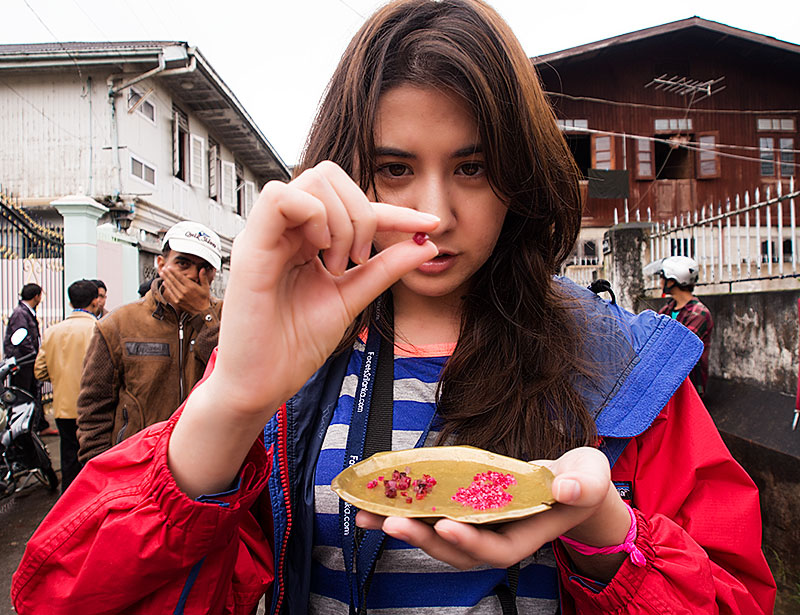 Lotus Gemology's Billie Hughes examining red spinel and ruby in a market in Mogok, Myanmar (Burma). Photo: Wimon Manorotkul
Lotus Gemology's Billie Hughes examining red spinel and ruby in a market in Mogok, Myanmar (Burma). Photo: Wimon Manorotkul
Parcels
Buying parcels is a specialized area beyond the scope of this article, but I do want to mention that parcels often look great with all the gems piled together. This is because they draw color from one another, with each gem adding color to the whole. For an accurate assessment of color, spread the parcel out such that individual gems do not influence the color of those nearby.
Treatments
Ruby was one of the first gems to be treated, with reports detailing the heat treatment in Sri Lanka dating back over 1000 years. But today's treatments are far more sophisticated than the primitive heatings of years gone by.
Today, ruby heat treatments run the gamut. The simplest is heating to knock out the blue component that makes a stone purplish. Such heating can be done at lower temperatures (say 700–1200°C) and is often undetectable.
Another type involves heating to higher temperatures (1200–1800°C) to remove rutile silk, and this is generally detectable.
But the type of heating that is most controversial is that applied to Möng Hsu rubies. This involves heating (1200–1800°C) in the presence of a flux. The flux produces healing of surface-reaching fractures and openings. Thus a highly fractured stone can be healed and the fractures dissipated. [For more on this, see 'Fracture Healing of Ruby • Fluxed Up']
A further treatment occasionally seen is oiling/staining. Gentle heating in alcohol (be careful!) can generally remove oils/stains.
One of the true tragedies of gemstone enhancements is that they raise expectations among the gem-buying public to unreasonable levels. Once a customer has seen the shocking reds produced by human tampering, it becomes far more difficult to accept the more ordinary hues of nature. No where is this more true than with Möng Hsu ruby.
I will not go into enhancement ethics. But it is essential that both buyers and sellers are aware of the presence of any treatment, for they can have an important impact on value. It is my personal opinion that, when spending a significant sum of money on a ruby, one should avoid treated stones of any kind.
Bring it on home
Wild beasts shall rest there
And owls shall answer one another there
And the hairy ones shall dance there
And sirens in the temples of pleasure
Laurie Anderson, Bright Red
Red is the most corrupting of colors and ruby the most wicked of gems, the very symbol of desire. Red is fire, blood, the very life-giver itself – passion. If this bothers you, then please shirk the scarlet stone.
A fine gem is a sexual being. It lives, pulses, throbs in a way that only those who have given themselves over to pure desire can understand.
In each of us, there is a beast waiting to appear. We do what we can to suppress it, but it lays dormant, ever watchful for its moment. Ruby – that most sexual of precious stones – brings out the beast in me. Long ago I surrendered myself to her flesh. And now – having experienced those sensuous kisses and passionate nibbles – no other lover will do.

References
- Anonymous (1943) What colour is “pigeon’s blood”? The Gemmologist, Vol. 12, No. 144, July, p. 47.
- Brown, J.C. and Dey, A.K. (1955) India’s Mineral Wealth. Bombay, Oxford University Press, 3rd ed., 761 pp.
- Halford-Watkins, J.F. (2012) The Book of Ruby and Sapphire. Hong Kong, RWH Publishing, [from a 1934 manuscript], 434 pp.
- Nelson, J.B. (1985) Colour filters and gemmological colorimetry. Journal of Gemmology, Vol. 19, No. 7, pp. 597–624.
- Nordland, R. (1982) On the treacherous trail to the rare ruby red. Asia, October, pp. 35–42.
- Samuels, S.K. (2003) Burma Ruby. Tucson, AZ, SKS Enterprises, 254 pp.
- Sarma, S.R. (1984) Thakkura Pheru’s Rayanaparikkha: A Medieval Prakit text on Gemmology. Trans. by Sarma, S.R., Aligarh, India, Viveka Publications, 84 pp.
About the author
Richard W. Hughes is one of the world’s foremost experts on ruby and sapphire. The author of several books and over 170 articles, his writings and photographs have appeared in a diverse range of publications, and he has received numerous industry awards. Co-winner of the 2004 Edward J. Gübelin Most Valuable Article Award from Gems & Gemology magazine, the following year he was awarded a Richard T. Liddicoat Journalism Award from the American Gem Society. In 2010, he received the Antonio C. Bonanno Award for Excellence in Gemology from the Accredited Gemologists Association. The Association Française de Gemmologie (AFG) in 2013 named Richard as one of the Fifty most important figures that have shaped the history of gems since antiquity. In 2016, Richard was awarded a visiting professorship at Shanghai's Tongji University. 2017 saw the publication of Richard and his wife and daughter's Ruby & Sapphire • A Gemologist's Guide, arguably the most complete book ever published on a single gem species and the culmination of nearly four decades of work in gemology. In 2018, Richard was named Photographer of the Year by the Gem-A, recognizing his photo of a jade-trading market in China, while in 2020, he was elected to the board of directors of the Accredited Gemologists Association and was appointed to the editorial review board of Gems & Gemology and The Australian Gemmologist magazine. Richard's latest book, Jade • A Gemologist's Guide, was published in 2022.
Author's afterword
First published in The Guide (2001, Vol. 20, No. 6, Part 1, November–December., pp. 4–7, 16). This web version has been modified slightly.

